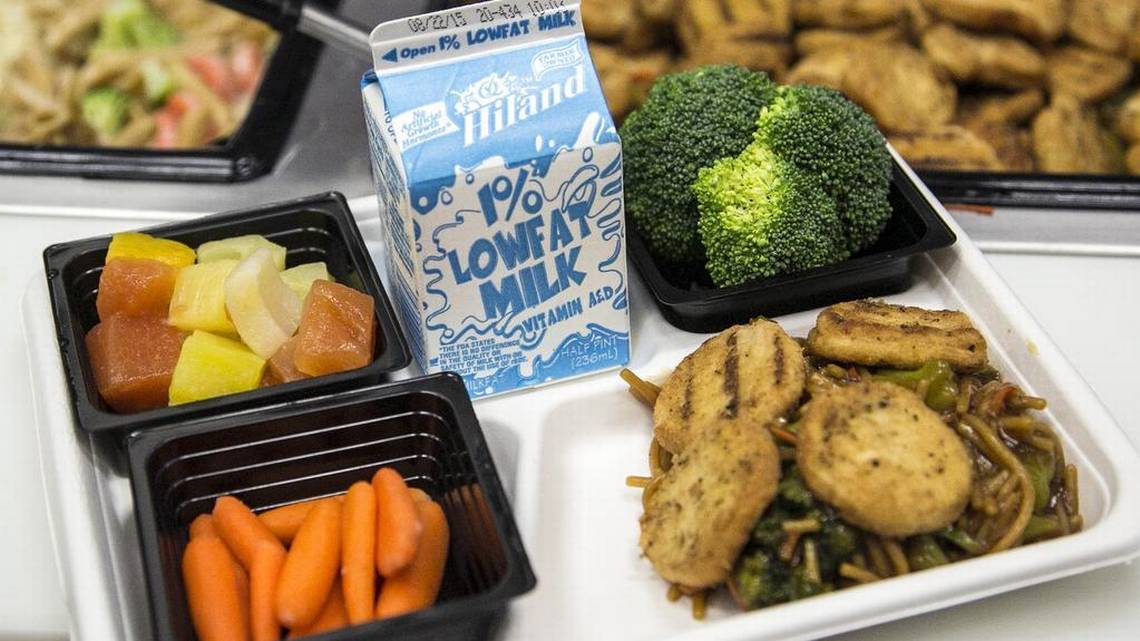After much anticipation, the USDA has finally provided clear guidelines on the use of salad bars in elementary schools, a topic that has sparked debate among nutrition advocates, school administrators, and parents alike. As the push for healthier meals in schools continues to gain momentum, this clarification represents an important step forward in the national conversation on how to best provide fresh, nutritious food to students.
Salad bars have become increasingly popular in schools as a way to offer students more choices and encourage the consumption of fresh fruits and vegetables. Many schools, particularly those in progressive districts, have already adopted salad bars as a key component of their lunch programs. These bars allow children to create their own meals from a variety of fresh, healthy ingredients, promoting autonomy and healthier eating habits.
However, concerns about food safety and compliance with USDA nutritional guidelines have slowed the widespread adoption of salad bars, particularly in elementary schools. Questions surrounding portion control, contamination risks, and the ability of young children to make healthy choices have led some school districts to hesitate in implementing these options.
The USDA’s new clarification removes much of the uncertainty surrounding salad bars. According to the guidelines, salad bars are permitted in elementary schools as long as they comply with existing nutrition standards and food safety protocols. Specifically, the USDA has outlined requirements for portion sizes, the types of foods that can be included, and the safe handling of fresh produce to prevent contamination.
Schools are encouraged to use salad bars as part of their reimbursable meal programs, meaning that students can select items from the salad bar while still ensuring that their meals meet USDA nutritional standards. The clarification also emphasizes the importance of training staff to monitor portion sizes and ensure that students are choosing a balanced combination of fruits, vegetables, proteins, and whole grains.
Salad bars offer a number of benefits, especially for younger students in elementary schools. They promote healthy eating habits by making fresh, colorful produce more accessible and appealing to children. Additionally, the ability to choose their own ingredients fosters a sense of independence and allows students to explore different tastes and textures.
Moreover, salad bars can help schools meet USDA guidelines that require students to be offered a variety of vegetables and fruits throughout the week. By including a diverse selection of options—such as leafy greens, colorful peppers, cucumbers, and tomatoes—schools can ensure that students are receiving the nutrients they need for healthy development and academic success.
While the USDA’s clarification is a positive step, there are still concerns about the logistics of implementing salad bars in elementary schools. Some school officials worry that younger children may struggle with portion control or that food waste could increase if students take more than they can eat. Additionally, ensuring food safety and preventing cross-contamination remain top priorities, especially for schools with limited staff and resources.
To address these concerns, the USDA has provided recommendations for best practices. These include training cafeteria staff to assist students in selecting appropriate portions and ensuring proper sanitation of utensils and surfaces. Schools are also encouraged to offer nutrition education to help students make informed choices at the salad bar.
With the USDA’s clarification in place, more elementary schools are likely to consider adding salad bars to their lunch programs. As schools strive to meet updated nutrition standards, salad bars offer a flexible and appealing solution that aligns with the growing demand for fresh, healthy options in school cafeterias.
Ultimately, the USDA’s endorsement of salad bars in elementary schools signals a shift towards more student-centered, health-conscious approaches to school meals. By empowering children to make healthier choices in an engaging and interactive way, schools can play a pivotal role in shaping lifelong eating habits that support well-being and academic achievement.

